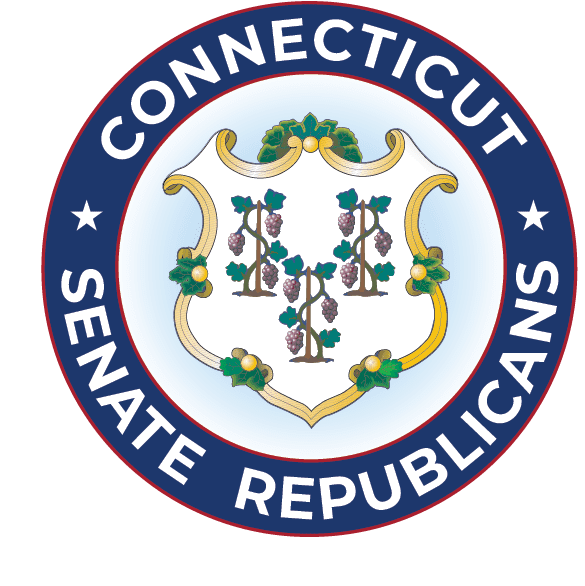Environmental Champions Celebrate Visionary ‘Blue Plan’ for Long Island Sound
November 16, 2015Renowned explorer Dr. Sylvia Earle joins Representative James Albis, Senator Ted Kennedy Jr. and Senator Tony Hwang in highlighting how the landmark legislation will benefit Connecticut’s environment and economy.
HARTFORD – While the environmental preservation movement is closely associated with the color green, Connecticut’s newly enacted Long Island Sound “Blue Plan” is making positive waves among activists and legislators alike.
Unanimously passed by both the House and Senate during the 2015 Legislative Session and signed into law this summer by Gov. Dannel P. Malloy, the Blue Plan (Public Act 15-66) ensures that Connecticut has a coordinated strategy for future use of Long Island Sound, by requiring the Department of Energy and Environmental Protection (DEEP) and relevant stakeholders to compile an inventory of the Sound’s natural and human resources.
The legislation was championed by Sen. Ted Kennedy Jr. (D-12) and Rep. James Albis (D-99), co-chairs of the General Assembly’s Environment Committee, and Sen. Tony Hwang (R-28), whose district includes the coastal towns of Fairfield and Westport.
Its passage was heralded by The Nature Conservancy and Save the Sound, and it has even drawn praise from Dr. Sylvia Earle, the world-renowned oceanographer, explorer, author, and lecturer who has earned the distinguished title of “Living Legend” from the Library of Congress.
“The Long Island Sound Blue Plan is an inspirational model for coastal states to follow as we move away from an era where exploitation of our ocean has been the norm,” Dr. Earle said. “It isn’t too late to change from the swift, sharp decline of ocean systems in recent decades to an era of steady recovery if we take action now. Science based management plans like the Blue Plan will create a baseline, and a roadmap for the future of Long Island Sound. Connecticut’s bipartisan success gives us hope that other states will take the necessary steps to ensure that future generations will reap the benefits of a healthy, sustainable ocean.”
The Blue Plan will be completed through a coordinated effort by DEEP and the University of Connecticut, as well as relevant state agencies, colleges, universities and other stakeholders. Given the unprecedented nature of the scope of the project and the comprehensive approach being employed, it is expected that the Blue Plan will take several years to complete.
“That is why it was so critical that we worked together to turn this forward-thinking vision into actual public policy for the people of Connecticut,” the three legislators noted.
Once finished, the Blue Plan will map natural resources, plant and animal habitats, and other unique ecological features along Connecticut’s coastline, and overlay those with existing recreational and commercial uses to provide a comprehensive picture of the Long Island Sound. The Blue Plan will also provide information on the impact that climate change could have on our coast, thereby setting the stage for a more proactive environmental preservation strategy.
“Long Island Sound is one of Connecticut’s most important natural resources, and with this Blue Plan we will be better equipped to protect it from climate change and develop economic strategies around it,” Sen. Kennedy said. “The waters and submerged lands of Long Island Sound are critical to the present and future of Connecticut’s economy and people who live along the shoreline. The Blue Plan will provide us with new tools we can use to act as better stewards for this important resource.”
“The Blue Plan is substantively important for what it will accomplish in the way of cataloguing natural resources and organizing responsible commercial and recreational uses of the treasure we know as The Long Island Sound, but equally so for its symbolic significance – that it underscores Connecticut’s commitment to being a leader on environmental and eco-friendly policy initiatives and that we, in government, can produce proactive legislation for the people and our natural world when we work together in a bipartisan manner,” Sen. Hwang said.
Rep. Albis added, “The Blue Plan is a great example of how government can be a helpful guide to ensure that smart, constructive decisions are made in the future. By compiling and cataloging so much important data about Long Island Sound, we know that any future decisions made for uses of the Sound will have been done on a basis strongly rooted in science, with the best interests of environmental, conservation, and economic factors in mind. I am proud that we were able to pass this bipartisan measure into law.”
Passage of the Blue Plan was also cited as a legislative success story by The Connecticut League of Conservation Voters, in its 2015 Environmental Scorecard. Noting the leadership demonstrated by Rep. Albis, Sen. Kennedy and Sen. Hwang on the Blue Plan and other key pieces of environmental legislation, CTLCV named the three “Legislative Champions” of the 2015 Session.
About the Long Island Sound
According to the state Department of Energy and Environmental Protection, “Long Island Sound is Connecticut’s largest and most important natural resource. More than 8 million people live in the Long Island Sound watershed and the activities that take place on and along the Sound – boating, fishing, tourism, and swimming – contribute an estimated $5.5 billion per year to the regional economy. The Sound provides feeding, breeding, and nesting areas for a diversity of plant and animal life.”
“One of the region’s largest estuaries with an area of 1320 square miles, the Sound is home to more than 120 species of finfish and countless varieties of birds and other animals. Between New York and Connecticut, the Sound’s coastline stretches more than 600 miles.”

